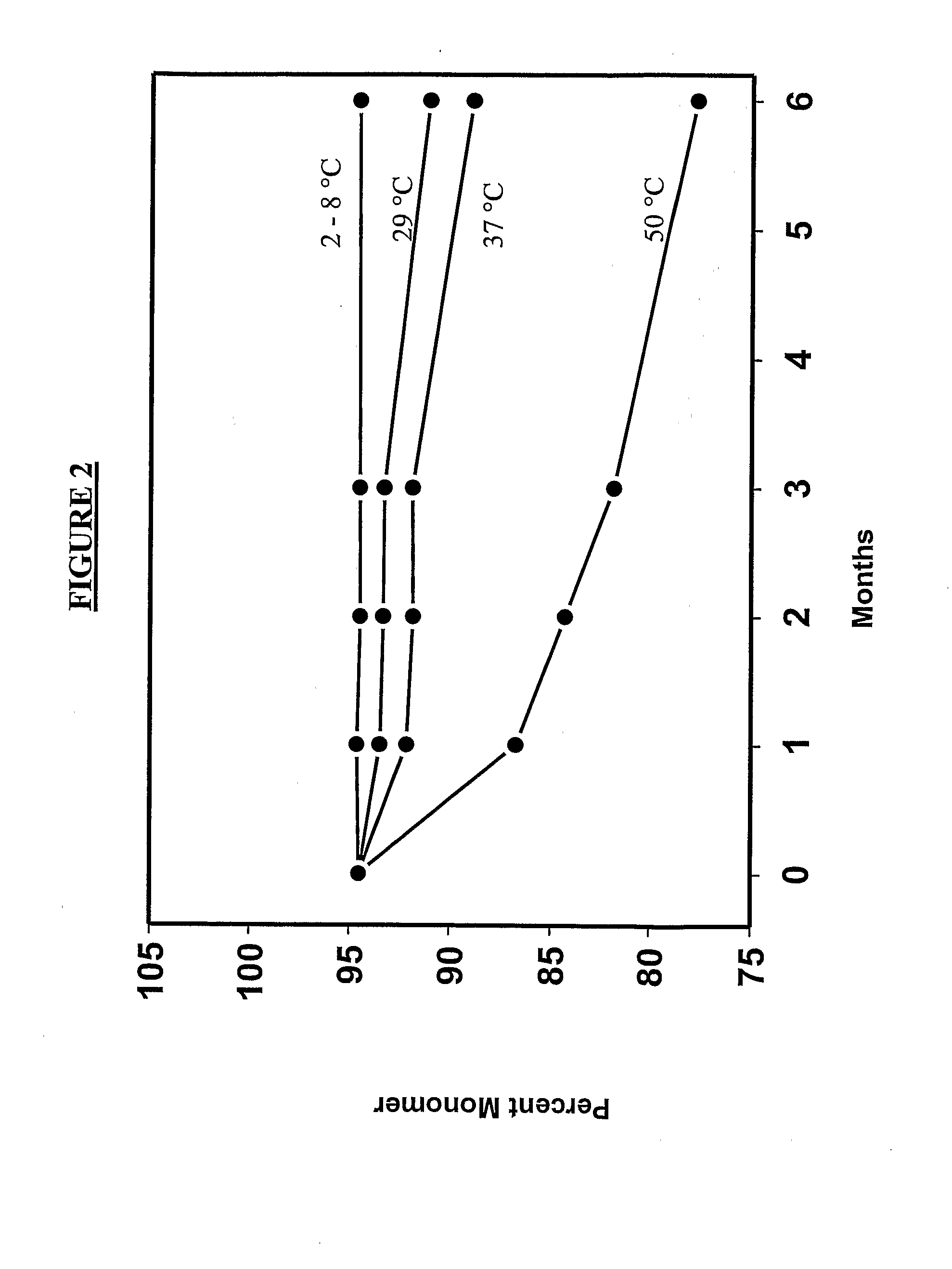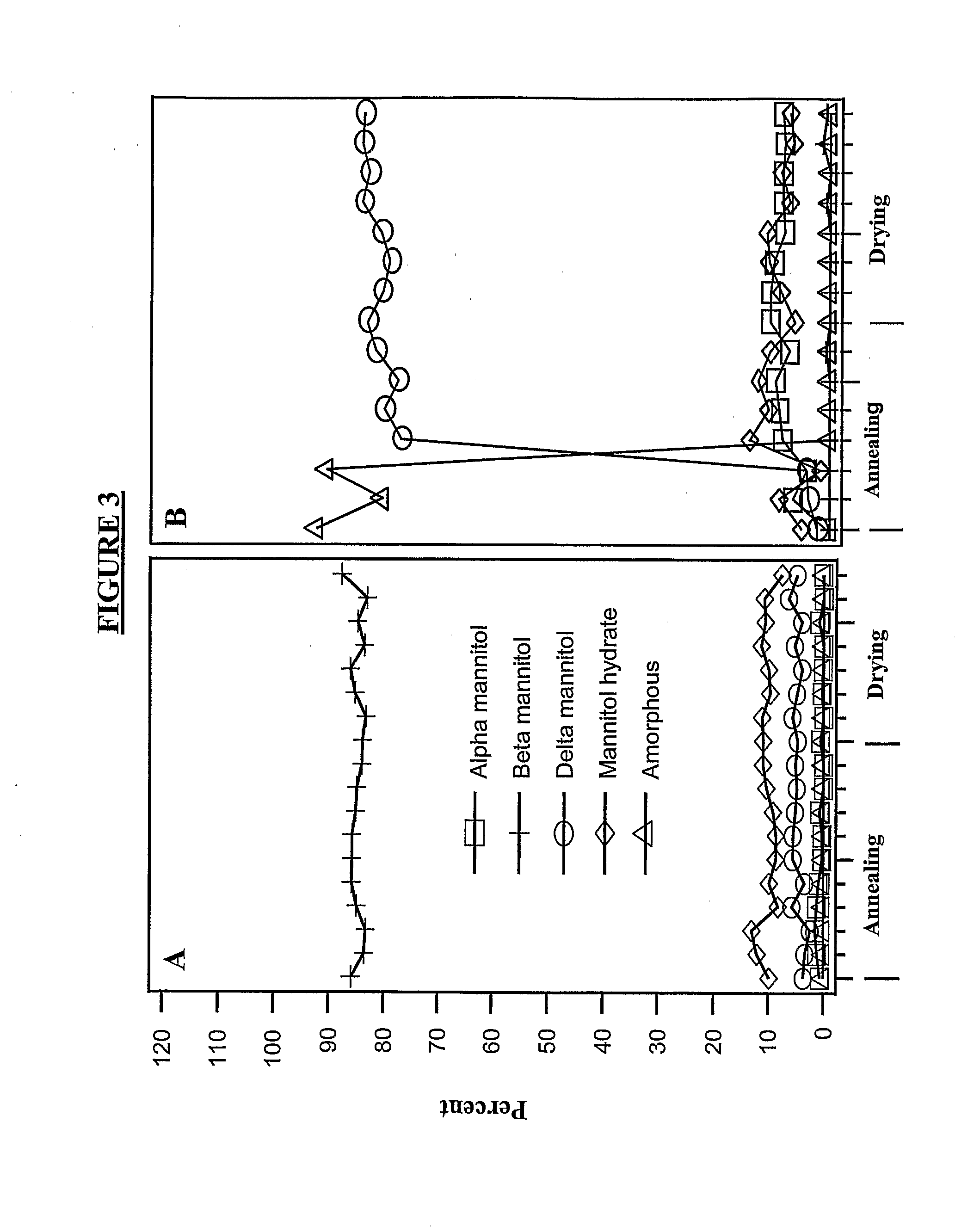Concentrated Protein Lyophilates, Methods, and Uses
a technology of concentrated protein and lyophilates, applied in the field of concentrated protein lyophilates, methods, and uses, can solve the problems of difficult to overcome regarding formulation and administration, prone to physical and/or chemical degradation in the liquid state, and large volume for transdermal administration, etc., to achieve the effect of reducing the moisture content of the composition
- Summary
- Abstract
- Description
- Claims
- Application Information
AI Technical Summary
Benefits of technology
Problems solved by technology
Method used
Image
Examples
example 1
Etanercept / Starting Preparation
[0604]Lyophilized etanercept (25 mg / ml) in TMS (10 mM Tris, 1% sucrose, 4% Mannitol, and pH 7.4) was used as the starting material. The protein was concentrated using 15 ml Centriprep filtering devices (M.wt cut off—10000) to 50 mg / ml in TMS. The starting material and the concentrated material were characterized structurally and compared. No lyophilization induced damage was observed. This material was used in the examples provided below.
example 2
Etanercept / UV Spectroscopy
[0605]Protein concentration was determined by UV absorbance, using an extinction coefficient at 280 nm of 1.14 for a 1 mg / ml solution. Diluent was used as the blank. Placebo samples were scanned from 240 nm to 400 nm using a water blank to confirm the absence of protein in the diluent. The absorbance maxima and exact wavelength of the peaks were recorded as well.
example 3
Etanercept / Lyophilization Cycles
[0606]Etanercept at 25 mg / ml or 50 mg / ml in TMS was lyophilized on a Genesis 12 EL lyophilizer (Virtis, Gardiner, N.Y.), using four different cycles, set out in Table 1.
[0607]For each of the cycles, etanercept vials were filled with 1 ml solution in a biosafety cabinet. Copper-constantan thermocouples were inserted into select vials through holes in the sides of specialized stoppers. The distance between the thermocouple and the bottom of the vial was adjusted to be approximately 1 to 3 mm. The product vials were surrounded by at least two rows of placebo TMS vials. To achieve a more uniform contact between the vials and the shelf, stainless steel trays with removed bottoms were used.
[0608]Except as noted in Table 1, for all cycles the shelves were pre-cooled to 5 C and the product was equilibrated at this temperature to reach a uniform temperature prior to ice crystallization. The shelf was then cooled to −50 C followed by annealing at different temp...
PUM
| Property | Measurement | Unit |
|---|---|---|
| concentration | aaaaa | aaaaa |
| surface area | aaaaa | aaaaa |
| temperature | aaaaa | aaaaa |
Abstract
Description
Claims
Application Information
 Login to View More
Login to View More - R&D
- Intellectual Property
- Life Sciences
- Materials
- Tech Scout
- Unparalleled Data Quality
- Higher Quality Content
- 60% Fewer Hallucinations
Browse by: Latest US Patents, China's latest patents, Technical Efficacy Thesaurus, Application Domain, Technology Topic, Popular Technical Reports.
© 2025 PatSnap. All rights reserved.Legal|Privacy policy|Modern Slavery Act Transparency Statement|Sitemap|About US| Contact US: help@patsnap.com



